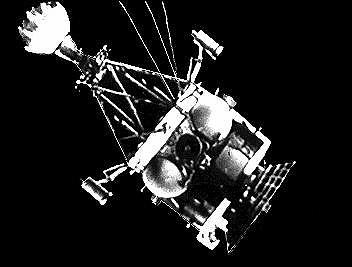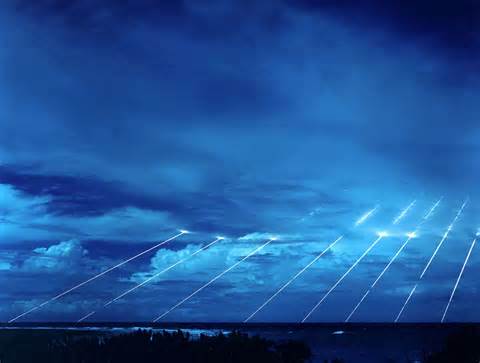For decades, the notion of futuristic military confrontations between space-faring powers has been an exceedingly popular motif in a great number of science fiction novels. Despite the current impracticality of advanced space-warfare, however, the exponential development of aeronautics technology has granted the concept a greater degree of legitimacy. Since the launching of the first satellites, humanity’s capacity to operate in outer space has grown exponentially. Recent developments, including the launching of the Mars Rover ‘Curiosity’ stand as ample testament to this fact. Nevertheless, although the majority of space-age technologies are being designed for scientific and exploratory purposes, there can be no doubt that their advancement will be accompanied by far more insidious applications.
Background:
The dawn of the colloquial “space age” can be said to have emerged during the Cold War when the Soviet Union and the United States competed to put a man on the moon. Years later, US President Ronald Reagan announced the creation of the controversial Strategic Defence Initiative (SDI), popularly referred to as “Star Wars”. The SDI was to be a comprehensive anti-missile defense shield that would effectively immunize the US from Soviet nuclear missiles in a fashion similar to that of the Israeli ‘Iron Dome’. Due to several difficulties, however, the plan was eventually withdrawn. It was calculated that offensive capabilities possessed an inherent advantage over defensive capabilities, and that the construction of the SDI would initiate an arms race between the US and USSR. In order to reduce hostilities between the two rival superpowers, the Anti-Ballistic Missile (ABM) Treaty was signed and both countries forfeited the capacity to defend against one another’s nuclear missiles. Since the collapse of the USSR, however, a large number of powerful countries have been developing the offensive capacity of their militaries with space-warfare in mind.

The Future of Space:
Although the space militarization status quo has not been significantly altered in many years, this is not to say that space neutrality will remain the norm for the foreseeable future. Space is becoming an increasingly important dimension for international security, evidenced by the growing number of military applications that require its use in order to function. Satellites, for example, are being utilized for a variety of military purposes, including battlefield surveillance through identifying enemy positions and relaying relevant information to friendly task forces. Space is also used to assess weather patterns and for providing early warning capabilities against enemy missile and air attacks. Consequently, space is becoming increasingly ‘militarized’ in the sense that it is playing a progressively more active role as a component of national armed forces.
In addition to space militarization, however, many experts are concerned about the actual weaponization of space. Thus far, the full-scale deployment of weapons with an operational capacity beyond the earth’s atmosphere has not yet materialized. This is primarily due to the large number of international treaties that have specifically forbidden the practice of doing so, including the Outer Space Treaty and the SALT II Treaty. Nevertheless, developing the technology to create such weapons is not similarly illegal, and is therefore proliferating at an alarming rate.
Typically speaking, there are three broad varieties of weaponized space systems that are currently available with today’s technology: Space-to-Space Systems, Space-to-Earth Systems, and Earth-to-Space Systems.
Space-to-Space Systems:

Arguably the most appropriate example of a space-to-space weapon is the Co-Orbital Anti-Satellite (ASAT). Conventionally, most ASATs operate via direct ascent systems. They work by launching a ballistic missile into orbit with an attached interceptor device towards a designated target. Co-Orbital ASATs, on the other hand, utilize a space launch vehicle to place an interceptor in orbit where it can lie in wait for an extended period of time. Once the target comes within range, the Co-Orbital ASAT will then maneuver itself to collide with the object as it passes by. To enhance their destructive capabilities, Co-Orbital ASATs are typically equipped with an explosive charge or fragmentation mechanism.
The Soviet Istrebitel Sputnikov (IS) ASAT system is an example of a Co-Orbital ASAT that was tested successfully between 1962 and 1980.
Space-to-Earth Systems:
Of all Space-to-Earth systems, space-launched kinetic energy weapons are perhaps the simplest and most economical. Colloquially referred to as “Rods from God,” kinetic energy weapons are hypervelocity aerodynamic projectiles composed of tungsten, a metal chosen for its high-melting point and hardness. Their size can range from small darts (100kg) to large poles that can weigh up to 8000kg each. When launched from orbital weapons platforms, these projectiles are gravitationally driven towards their terrestrial targets by atmospheric guidance systems at speeds of over Mach 10. Once their kinetic energy is released, the resulting blast is equivalent to that of a large conventional bomb or a small nuclear device. In addition to their explosive capabilities, kinetic energy weapons have the strategic capacity to penetrate targets deep under the earth’s surface and expose them to conventional aerial bombardments. Other feasible Space-to-Earth systems include space-launched nuclear missiles and orbital laser platforms designed to destroy intercontinental ballistic missiles.

Earth-to-Space Systems:
Unlike Space-to-Space and Space-to-Earth systems, Earth-to-Space weapons are operated from the ground and are primarily used for defensive purposes. Ballistic Missile Defence kill vehicles are a pertinent example, and represent a revitalization of Reagan’s Strategic Defence Initiative. BMD systems are missiles engineered to intercept ICBMs during their mid-course flight path above the earth’s atmosphere, thereby allowing target countries to shield themselves against incoming nuclear missiles. Additional Earth-to-Space weapons include ground-based laser defences and High Altitude Nuclear Detonations (HAND) designed to intercept multiple ICBMs.

Overall, the number of potential space weapons available to countries today is quite staggering. The majority of these have been developed by the United States, which currently possesses the greatest capacity for space warfare. Nonetheless, the US is not the only country that has been developing these technologies for military purposes. It has been widely speculated that China will rise to become the new rival to US space dominance. Although China has been publicly opposed to the development of these weapons, its recent destruction of its own ageing satellite with a medium-range ballistic missile has cast doubt on its sincerity. This action, coupled with the complete lack of transparency regarding its military budget could indicate the beginnings of a new space-race between the US and China. Without a series of international treaties regulating the creation of such technologies, the development of this scenario appears almost inevitable.




